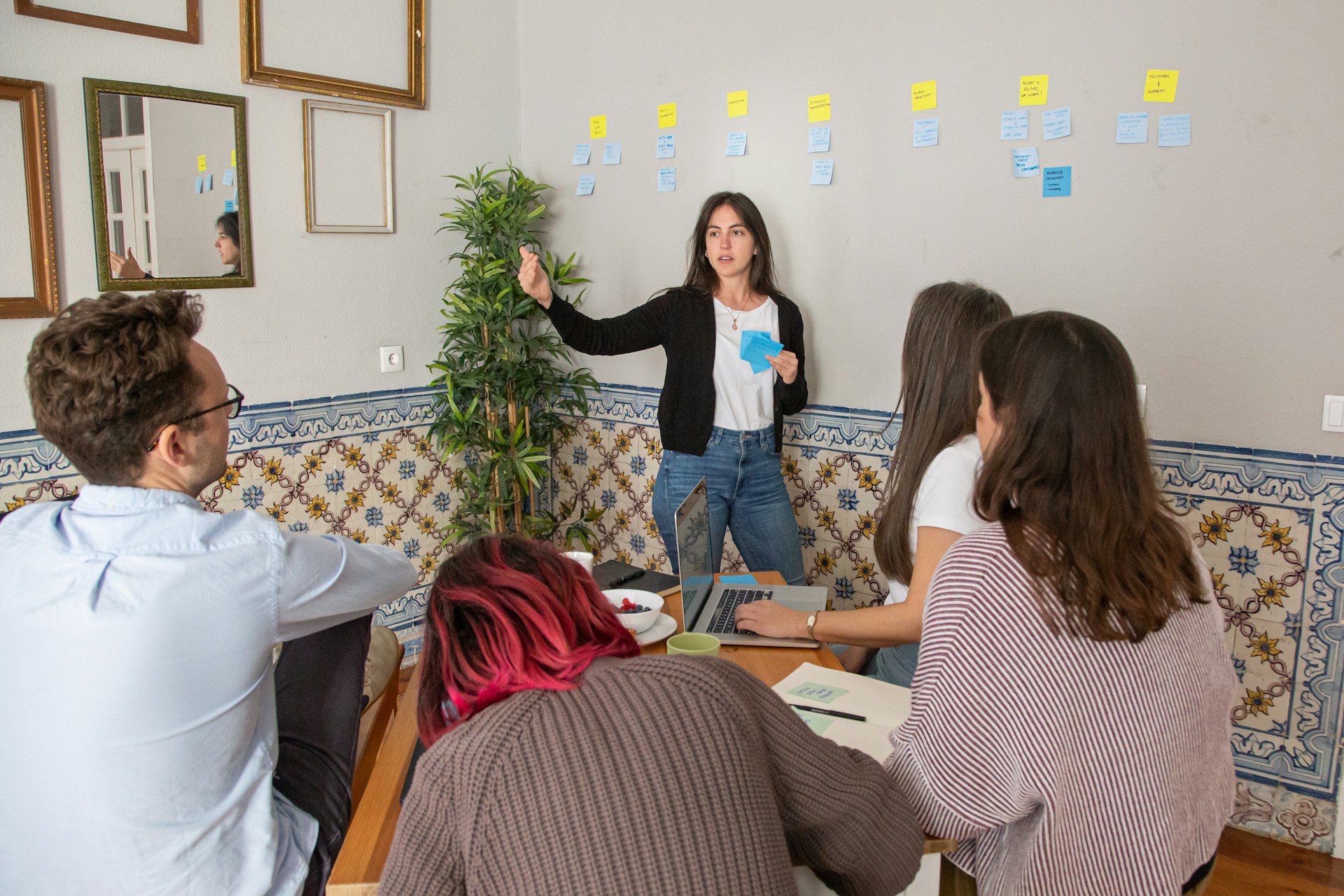How Can Coaching Help My Health and Well-Being?

The overall goal of WHO's World Mental Health Day, held annually on October 10, is to raise awareness of mental health issues around the world and mobilize efforts to support mental health. The day is an opportunity for all stakeholders working on mental health issues to talk about their work and what more needs to be done to make mental health care a reality for people around the world. But at best, Employee Wellbeing should find priority in organizations every day.
Understanding the link between wellbeing and the workplace
In order to paint an image of health and wellbeing in today’s workplaces, you might think back to the times when you were a child playing on a beach. You might remember making a game out of jumping ocean waves, one after another, until at one point a large wave would come rolling and you would tumble and fall. Everything became dark, the sense of right or left, up and down was lost, and just when you realized you couldn’t breathe and started to panic, the wave rolled back into the ocean and released you laying in the shallow water, confused, with sand in your hair. Only to shake off what in your child's mind was a near-death experience, and do it all over again. So you kept jumping, and jumping, and jumping, until the next big wave rolled around.Very similar to children jumping waves, organizations are moving from one change, crisis, and transformation to the next, with employees and leaders scrambling to evolve and keep up with the ever-fastening pace. Just like anyone becomes tired after hours of jumping and tumbling through ocean waves, employees and organizations are tired of tumbling through or barely managing change efforts that often add to individual workloads, put strain on leaders, and fail to address the systemic, cultural, and behavioral (leadership) challenges that need to be addressed for an organization to truly be successful in today’s world of constant change. Organizations who tumble from one wave to the other are not only strained and unsuccessful in trying to manage transformation, they are also strained and unhealthy workplaces. Burnout rates are rising at an alarming rate across western economies, and mental illbeing is one of the main causes of the overall disease burden worldwide. In short: In order to stop tumbling from one wave to the other, and instead build workforces who don’t strain but thrive in transformation, organizations need to put the health and wellbeing of their employees at the top of their transformation agenda. A first step towards creating such workplaces is to offer employees a space to actively consider their mental health in the context of their work life, for example through individual (or group) coaching.
The link between coaching and wellbeing
Coaching has been linked to a wide range of positive wellbeing-outcomes, such as resilience, stress management, coping, engagement, work satisfaction, positive emotions, sense of meaning, and goal attainment, to name a few. A first step towards determining how coaching might help an individual's health and wellbeing is to understand the context in which coaching can best help. We differentiate between Primary, Secondary, and Tertiary mental illbeing prevention. Primary prevention means reducing potential risk factors of work stress and stressors before the individual experiences a lack of wellbeing. Secondary prevention means equipping employees with knowledge, skills and resources to cope with stressors and support them in activating resources to avoid further progression of illbeing. Coaching is typically best applied as a tool for primary and secondary prevention. Understanding the differences between coaching and other types of interventions (e.g., psychotherapy) is a key factor in deciding how to design a wellbeing coaching offer for leaders and employees.
Seligman’s PERMA model
So how can coaching help one’s health and wellbeing? By applying a number of different tools and techniques aimed at addressing internal and systemic factors that impact an employee's wellbeing at the workplace. Arguably the most well-known model of individual health and wellbeing is Seligman’s PERMA model, which captures five domains that individually and in combination, have positive effects on wellbeing outcomes:
- Positive emotion
- Engagement
- Relationships
- Meaning
- Accomplishment
#1: Positive Emotion
Positive emotions are linked to a number of positive wellbeing outcomes, including optimism, self-efficacy, prosocial behavior, physical well-being, and effective coping with challenge and stress. There are a number of ways in which coaching can help an individual experience more positive emotions in the workplace. Well-established coaching tools are the practice of gratitude, self-compassion, or acceptance and commitment.
#2: Engagement
Engagement is defined by Schaufeli et al. (2006) as a state of wellbeing in the work context characterized by vigor, dedication, and absorption. Those familiar with Positive Psychology literature will notice the similarities of this definition with the concept of Flow, a state in which an individual is fully absorbed in an activity and time passes without awareness. More experiences of Flow are a crucial ingredient towards growing one's work engagement. Character strength interventions are a common tool for coaches, in which the coach helps the coachee in exploring personal strengths, and helping them to actively apply their strengths at work.
#3: Positive Relationships
Research shows that the quality of our relationships is one of the most important predictors of individual health and wellbeing. Positive relationships at work with our colleagues, employees, and supervisors can have a significant impact on our engagement, job satisfaction, sense of meaning in work, and help us cope with the stresses of work demands. A coach can help us identify and develop high-quality, meaningful relationships inside and outside the workplace, and we might use coaching to explore the multiple relationship systems we are embedded in, and learn how these systems impact our individual wellbeing, and the collective wellbeing of those around us.
#4 Meaning
Meaning research shows that the presence of meaning in work has a significant impact on individual health and wellbeing, while the search for meaning correlates with negative emotions, such as high anxiety and even depression. Knowing what makes our (work) lives meaningful is an important factor in our wellbeing. Together with a coach, one might consider the meaning one can draw from their work. Here, we are not referring to employees connecting to the often-cited but rarely applied company vision statement. Instead, employees are much more likely to gain meaning from their immediate work environment, their day to day tasks, relationships with colleagues or customers. Creating an awareness through coaching for (even small) aspects of meaning at work can already have a significant impact on one’s health and wellbeing.
#5 Accomplishment
Coaching has a significant impact on our individual health and wellbeing, independent of it being a wellbeing-focused coaching or not. That is because the mere process of goal setting and attainment is already linked to greater individual wellbeing. In fact, research shows that already the small steps one makes towards achieving a desired goal, independent of goal achievement, is already linked to greater wellbeing.
Bottom Line
As market pressures continue to rise, so will the demands on organizations and their employees and leaders to innovate and transform. Although the claim of causation might exceed the purpose of this blog post, burnout rates are rising, and so is the number of tertiary prevention interventions in organizations, also known as Employee Assistance Programs. At the same time, the world is beginning to acknowledge the well-proven, yet well-undermined fact that the long-term use of antidepressants might not have the effect their proponents had claimed. What is the alternative for markets (and their organizations) who have (un)successfully tried to balance rising work demands with medical intervention? Before joining a different type of (great) resignation, we might approach our systemic faults within the bounds of our reach as people leaders. This means addressing individual and collective wellbeing-needs before such needs arise. This means creating environments in which individuals grow their internal and external resources to not only cope with the next wave that comes rolling, but maybe learn to surf it.
FAQ
Yes, executive coaching plays a key role in retaining and engaging senior leaders by giving them space to reflect, grow, and lead with purpose. Through individualised support, executives strengthen communication, decision-making and resilience — all of which drive engagement and long-term satisfaction.
With CoachHub Executive™, organisations not only see improved leadership performance but also greater alignment, motivation and confidence among their top talent, resulting in higher retention and a stronger leadership pipeline.
CoachHub Executive™ goes beyond one-to-one sessions by integrating technology, measurable insights and continuous learning into every coaching journey. Each executive benefits from personalised matching with certified coaches and flexible session formats to reinforce development between sessions.
While traditional coaching often lacks scalability or measurable tracking, CoachHub ensures impact visibility through data-driven dashboards, 24/7 scheduling flexibility and a consistent, high-quality experience for leaders worldwide, that can be tailored to your organisation's goals.
Yes, executive coaching is delivered across 90 countries in 40+ languages, with localised coach networks that meet the cultural and business needs of global organisations.




.svg)


.svg)





.png)



.jpeg)